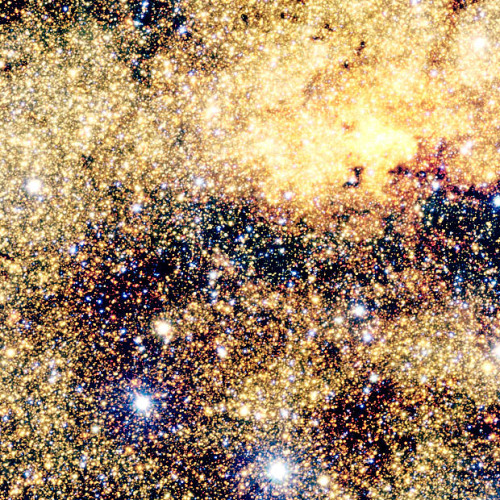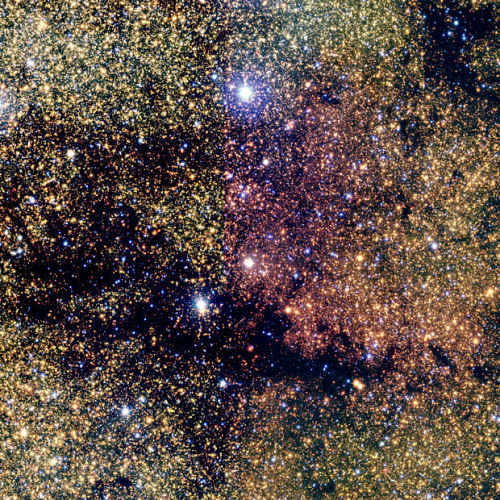Extraterrestrial Life May Be Closer Than We Think
Extraterrestrial Life May Be Closer Than We Think
Just when we think we have the universe somewhat figured out, it throws us a massive curveball from our very own backyard. Hold on to your telescopes, everyone, because one of our own planetary neighbors right around the corner may have the right conditions for extraterrestrial life.
On April 14, a paper published in Science Mag pointed out biochemical signatures of hydrogen production in the hydrothermal reactions in the form of plumes that erupt from the ice surface of Enceladus, one of Saturn’s moons. Molecular hydrogen is one of the building blocks of life because it is the ideal food source for microbes and bacteria, which are at the forefront of every food and energy chain (at least on Earth). This implies that the ocean beneath the ice has enough chemical activity and organic matter to maintain the right conditions to sustain life, at least on the molecular level. This kind of chemistry can indicate habitable zones in Enceladus’ ocean.
To provide a bit of a context from here on Earth: our own oceans contain deep-sea hydrothermal vents that are home to complex and important ecosystems that allow microorganisms to live and grow by using energy from the minerals produced by these vents. These microorganisms are necessary for food and energy chains to form since larger organisms feed on these microorganisms and create entire ecological communities. Many scientists have pointed out these kinds of superheated environments as prime locations for life to begin.
But having the right conditions for life doesn’t mean already harboring life. There is still a lot that we don’t know about what’s going on below the surface of Enceladus. While scientists have known about its ocean since 2005, it is only now that technology has improved to the point where it can pick up sensitive biochemical signatures and provide a more detailed picture of Saturn’s icy moon.
Recently, NASA has announced a mission called Europa Clipper that will explore Europa, another one of Jupiter’s icy moons with an ocean. It will launch sometime in the 2020s. Perhaps NASA will consider stopping by Enceladus...who knows what we can find there?
More Posts from Catchconstellations-blog and Others
Let me start off by saying that I think Crash Course is a great resource for people who want to get the basic details of any subject the creators offer. CC’s series for astronomy is particularly wonderful. The science behind astronomy and space can be mind-boggling due to the complexities of physics, mathematics, photonics, and other relevant subjects; CC makes it easy and fun to learn about astronomy without being too technical or in-depth. Great series of videos if you have time to check them out!
A 2015 documentary on the history of space, the current progress of space exploration, and where we might go in the future.
If you have around an hour to spare, and a space itch to scratch, this is an awesome documentary to watch! It has very good scientific support, fantastic HD visuals, and exciting narration. It really opens your eyes to how much we’ve discovered only recently, and also how much we still don’t know. Great documentary!
A Personal Update
Hello everyone! This is just a quick behind-the-blog update from me.
I’ve been applying to NASA internships for the past three months, and I’m sad to say that I was not chosen for any of them.
I must admit it broke my heart a little bit to see the positions I applied for fill up with no offer extended to me. I really thought I had a good shot at a few of them this time around. I really thought I had a chance.
I’m writing this because I want everyone to know that is natural to feel frustrated and disappointed, and that whatever setback you may encounter is not the end of the world. Just as there are countless stars in the night sky, there are just as many opportunities still waiting for you to find them.
Yes, my heart is heavy from this, but I know I’ll bounce right back. Rejection is a part of life, after all, and no one ever made it to the stars after giving up because of a few rejections.
I’m going to keep moving forward, with my eyes on the stars, doing what I love to do, and I know I’ll get where I want to be someday.
Until then, ad astra!

Solar System: Things to Know This Week
Earth is the ultimate ocean planet (that we know of), but it turns out that our solar system has water in some surprising places, with five ocean-bearing moons and potentially several more worlds with their own oceans.

1. The Original “Alien Ocean”
Our Galileo spacecraft (1989-2003) detected the first evidence of an ocean beyond Earth under the ice of Jupiter’s icy moon Europa.

2. Lost Oceans
There are signs that Mars and Venus once had oceans, but something catastrophic may have wiped them out. Earth’s natural force field – our magnetosphere – acts like shield against the erosive force of the solar wind.

3. Earth, the Original Ocean World
The search for life beyond Earth relies, in large part, on understanding our home planet. Among the newest Earth ocean explorers us the Cyclone Global Navigation Satellite System, or CYGNSS–a constellation of microsatellites that will make detailed measurements of wind speeds over Earth’s oceans to help understand hurricanes. The spacecraft have moved into their science operations phase.

4. Sister Ships
It’s fitting the first mission to explore an alien ocean is named in honor of fast-sailing clipper ships of old. Our Europa Clipper spacecraft will seek signs of habitability on Jupiter’s moon Europa.

5. Game Changer
Scientists expected Saturn’s moon Enceladus to be a tiny, solid chunk of ice and rock. But, not long after arriving at Saturn, our Cassini spacecraft made a series of incremental discoveries, eventually confirming that a global subsurface ocean is venting into space, with signs of hydrothermal activity.

6. Why Ocean Worlds Matter
“The question of whether or not life exists beyond Earth, the question of whether or not biology works beyond our home planet, is one of humanity’s oldest and yet unanswered questions. And for the first time in the history of humanity, we have the tools and technology and capability to potentially answer this question. And, we know where to go to find it. Jupiter’s ocean world Europa.” - Kevin Hand, NASA Astrobiologist

7. More Alien Oceans
Scientists think Jupiter’s giant moons Ganymede and Callisto also hide oceans beneath their surfaces. Elsewhere in the solar system, scientists hope to look for hidden oceans on far-flung worlds from Ceres in the main asteroid belt to Pluto in the Kuiper Belt.

8. Cold Faithful(s)?
Thanks to our Cassini orbiter we know the tiny moon Enceladus is venting its ocean into space in a towering, beautiful plume. The Hubble Space Telescope also has seen tantalizing hints of plumes on Jupiter’s moon Europa. Plumes are useful because they provide samples of ocean chemistry for oceans that could be miles below the surface and difficult for spacecraft to reach. It’s like they’re giving out free samples!

9. Titanic Seas and Ocean
Saturn’s moon Titan not only has liquid hydrocarbon seas on its surface. It also shows signs of a global, subsurface saltwater ocean–making the giant moon a place to possibly look for life as we know it and life as we don’t know it … yet.

10. Oceans Beyond
Several of the thousands of planets discovered beyond our solar system orbit their stars in zones where liquid surface water is possible–including Proxima-b, a rocky planet orbiting the star nearest to our own.
BONUS: Adopt a bit of YOUR Ocean World
We invite everyone to help us celebrate Earth Day 2017 by virtually adopting a piece of Earth as seen from space. Your personalized adoption certificate will feature data from our Earth-observing satellites for a randomly assigned location, much of it ocean (it is 70 percent of the Earth’s surface after all!). Print it and share it, then explore other locations with our interactive map and get even more Earth science data from NASA’s Worldview website.
Visit go.nasa.gov/adopt to adopt your piece of the planet today!
Discover more lists of 10 things to know about our solar system HERE.
Make sure to follow us on Tumblr for your regular dose of space: http://nasa.tumblr.com
Beautiful! Would like to visit all of these places someday <3









World’s largest salt flat: Salar de Uyini, Bolivia


Milky Way Shows 84 Million Stars in 9 Billion Pixels
Side Note: The two images shown above are mere crop outs from ESA’s recent hit: The 9 Billion Pixel Image of 84 Million Stars. These two focus on the bright center of the image for the purpose of highlighting what a peak at 84,000,000 stars looks like.
Astronomers at the European Southern Observatory’s Paranal Observatory in Chile have released a breathtaking new photograph showing the central area of our Milky Way galaxy. The photograph shows a whopping 84 million stars in an image measuring 108500×81500, which contains nearly 9 billion pixels.
It’s actually a composite of thousands of individual photographs shot with the observatory’s VISTA survey telescope, the same camera that captured the amazing 55-hour exposure. Three different infrared filters were used to capture the different details present in the final image.
The VISTA’s camera is sensitive to infrared light, which allows its vision to pierce through much of the space dust that blocks the view of ordinary optical telescope/camera systems.
source
Thoughts on the ISS Water Systems
Recently, I was asked by my research mentor to conduct a literature review on the drinking water systems aboard the International Space Station. Let me say this: the technology and the people aboard the ISS really know how to recycle water!
Here are some cool facts I discovered while doing this research:
- Sweat, pee, and tears are all recycled through intensive chemical and physical processes
- There is no way to recycle/reuse solid waste like brine yet, so it is packaged and sent back down to Earth through payloads
- The ISS has a motherboard-like program called the Environmental Control and Life Support System (ECLSS) that basically outlines in detail all the processes that need to be in order to sustain life aboard the spacecraft
- The ISS is currently able to support six living crewmembers aboard, but it is not 100% sustainable because chemical resources (oxygen, water, etc.) are invariably lost over time
Just some things I found interesting. I was glad to do this kind of literature review because it gives me an outlook on how much progress we still need to make in trying to achieve long-term space travel and habitation.

The beautiful Milky Way taken in one of the most darkest skies in the world over Boa Vista in the Cape Verde Islands. photo by James Atkinson
js
-
 howstrangethemusicsoundstome liked this · 8 years ago
howstrangethemusicsoundstome liked this · 8 years ago -
 catchconstellations-blog reblogged this · 8 years ago
catchconstellations-blog reblogged this · 8 years ago
CONSTELLATION: (noun) Group of stars that form a recognizable pattern to which a mythological or earth-based name is assigned Pattern of stars whose name or is associated with different stories and meanings Story told by stars connected across the infinite night sky, overlapping with countless other stories that have unfolded from ancient supernovas, whose imaginary lines urge our eyes up from the chaos of the world around us to the unknown vastness in which we are but a speck of dust -------- Hi! I’m a starry-eyed astrogeek named Dianne who loves absolutely everything that has to do with the stars and outer space. When I’m not studying or preparing to take over NASA one day, you can find me trying to stargaze despite city lights or happily planning my next road trip.
35 posts


